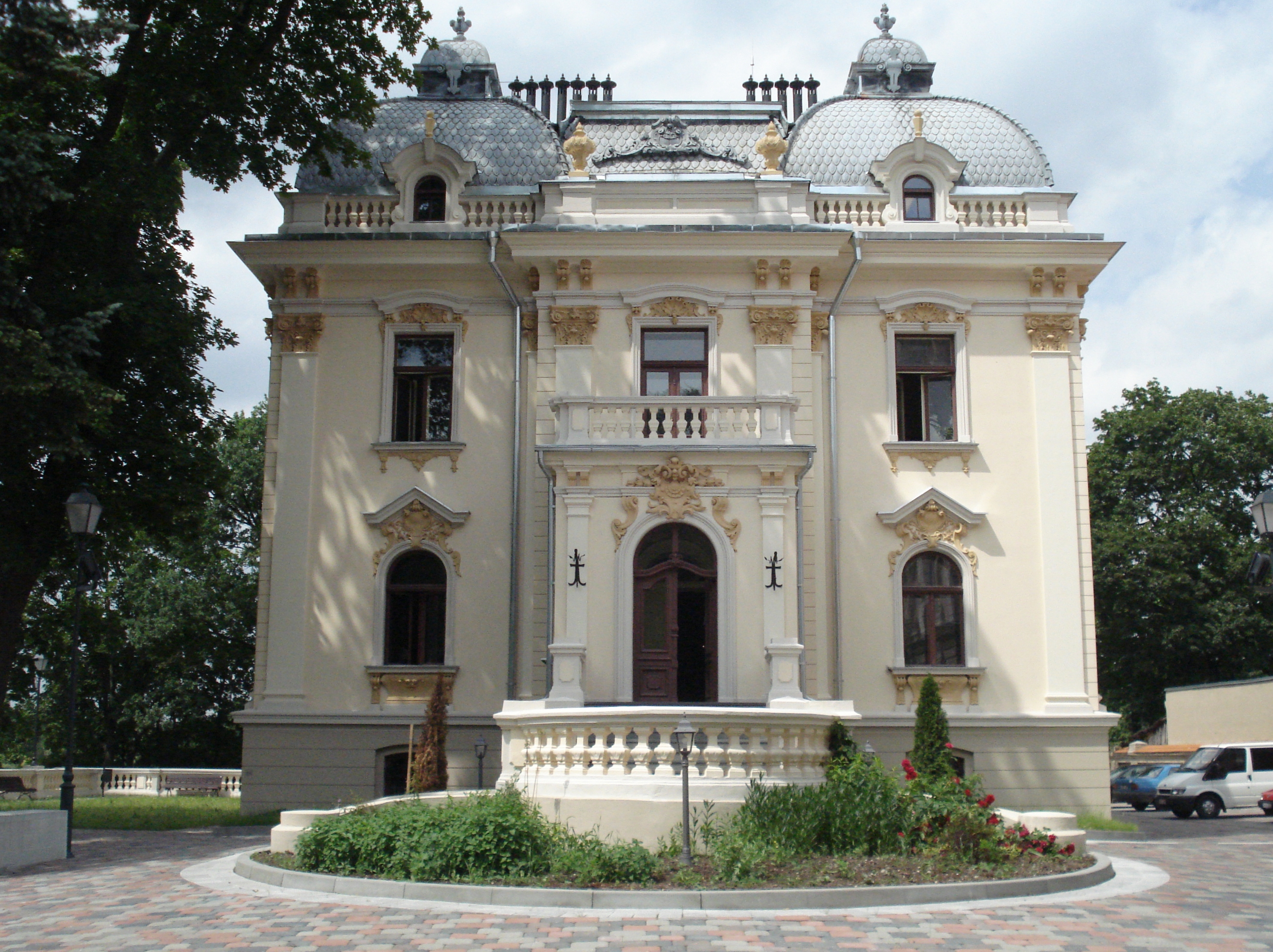- Vileišis Palace
Infobox Historic building
name = "Vileišių rūmai" "Vileišis Palace"
caption = Facade of the palace
location_town =Vilnius
location_country =Lithuania
architect =August Klein
client =Petras Vileišis
engineer =
construction_start_date = 1904
completion_date = 1906
date_demolished =
cost =
structural_system =
style =Neo-baroque
size = Vileišis Palace is a Neo-baroque style architectural ensemble inVilnius ,Lithuania , built forPetras Vileišis . Vileišis, a prominentLithuania n engineer, politician, publisher, and entrepreneur, commissioned the palace in 1904 and supervised its construction. The ensemble consists of a palace, a guesthouse, and an outbuilding, and currently houses theInstitute of Lithuanian Literature and Folklore . It was renovated during the early 2000s.History
The palace's architect,
August Klein , prepared two plans, one Neo-classical and the otherNeo-baroque . [cite news | first= | last= | coauthors= | title=Petro Vileišio rūmų ansamblio restauracijos aidai | date=2007 | publisher= | url =http://www.caparol.lt/objs/news/pdf/pdf_30504.pdf | work = | pages = | accessdate = 2007-09-20 | language = Lithuanian ] Vileišis selected the Neo-baroque style, because of the site's proximity to the baroque St. Peter and St. Paul's Church.Work on the ensemble began in 1904. According to witnesses, the lime used in its construction was diluted with separated milk rather than water.cite news | first= | last= | coauthors= | title=Vileišių rūmų ansamblis | date= | publisher= | url =http://www.llti.lt/rumai.htm | work = | pages = | accessdate = 2007-09-20 | language = Lithuanian ] Some materials not customarily used at the time in palace construction were employed, such as
cement , concrete, andferroconcrete . Building materials were bought fromFinland and theNetherlands . The project was completed in 1906. It was situated on a one-halfhectare site, surrounded by awrought iron fence and elaborately landscaped.The main palace is a two-story building. Petras Vileišis' office and
waiting room were located on the first floor, as were a hallway, two drawing rooms and a dining room. The large chandelier in thevestibule was a gift from the workers at the "Vilija" factory. A terrace between the first and second floors was surrounded by abalustrade . The family's bedrooms were located on the second floor, while servants' quarters were located in the attic under aThe ensemble's guesthouse is three stories tall, with two stairways. Vileišis established a
printing press forVilniaus žinios , the first legal Lithuanian-language daily newspaper in Vilnius, in the basement. The newspaper's editorial and administrative offices were on the first floor; other offices were located on its second floor. On1907 January 9 , the first Lithuanian Art Exhibition was held at the guesthouse, presenting the artwork ofMikalojus Konstantinas Čiurlionis andAntanas Žmuidzinavičius . It was the first exhibition of Čiurlionis' paintings.The ensemble's outbuilding, constructed in yellow brick, is two stories tall. This building was used as a book bindery and as living quarters for servants.
Petras Vileišis and his family lived in the palace until
World War I . In 1926, Vileišis died and the palace was inherited by his daughter, Elena Vileišytė. In 1931, she sold the entire ensemble to the Lithuanian organization "Rytas" for 55,000US dollars .cite news | first= | last= | coauthors= | title=Vileišių rūmai atgijo antram gyvenimui | date=2007-03-13 | publisher= | url =http://www.lrytas.lt/?id=11737854551173579035&view=4 | work =Lietuvos Rytas | pages = | accessdate = 2007-09-20 | language =Lithuanian] From 1941 to 1990 the palace housed the Lithuanian literature and Lithuanian language institutes. Since 1990, it has housed theInstitute of Lithuanian Literature and Folklore .Palace today
The palace underwent three years of renovation in the early 2000s and was re-opened in 2007. Since it was structurally sound, its restoration was largely cosmetic. During the renovation, many significant historic documents were found hidden in the palace walls. However, the long-missing copies of the
Act of Independence of Lithuania , signed in 1918, were not found, despite a popular belief that they were hidden in the palace. [cite news | first= | last= | coauthors= | title=Viltis rasti Vasario 16-osios akto originalą vis labiau blėsta | date=2006-02-13 | publisher=Lietuvos Rytas | url =http://www.lrytas.lt/?id=11398300311138538447&view=4 | work = | pages = | accessdate = 2007-09-21 | language = Lithuanian ] Petras Vileišis' brother,Jonas Vileišis , was one of the Act's signatories.References
Wikimedia Foundation. 2010.
